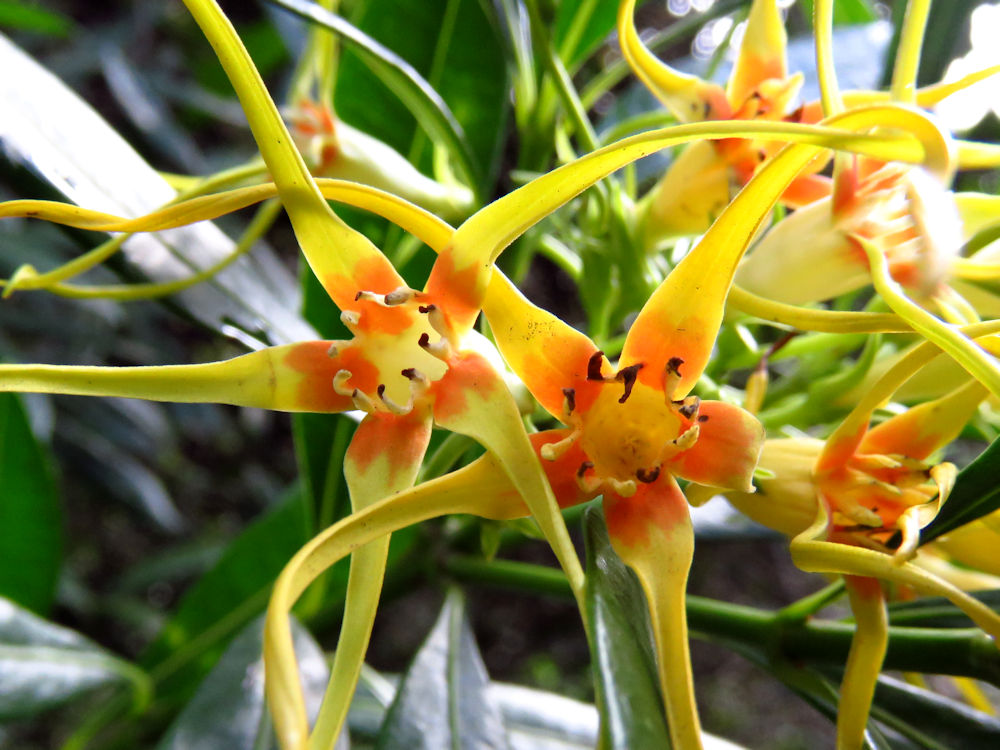Strophanthus speciosus
For years, when I walked in mist-belt forest almost daily, I was puzzled by the identity of saplings with shiny, elliptic leaves, that were growing on the forest floor. Eventually, I discovered they were Stophanthus specious – a climber, not actually a tree.

Usually the interesting spidery flowers are spotted fallen in the leaf litter. I seldom saw them on the plant reaching for the light high above – it can climb 10 metres through the trees. As with most lianas or forest creepers, they provide good nesting places for birds.

The bark is greenish with little white spots, the leaves are leathery. When the first rains arrive in spring, the plant flowers.

The flowers are borne in clusters at the end of the stems. The long trailing and twirling petals are creamy-yellow, with orange splotches at the base. Very striking and fragrant. The buds are twisted before opening. The genus name stophus which means twisted cord, refers to this feature of the flowers.

After flowering, a greenish yellow two-horned fruit develops, then splits to release seeds that fly away in the wind to germinate. Strophanthus speciosus is found on forest margins in KwaZulu-Natal and all the way Zimbabwe. Of the 38 known species, 6 species occur in southern Africa.
Even though the seeds, leaves and latex of this plant are poisonous, the root is used to treat snakebite. Chewed by humans or pounded and fed to cattle. In times gone by, apparently the seeds were used to prepare arrow poison and the fruit as a spear poison.
Zulu names for Strophanthus are : amaSebele, umHlazazane, isihlungu

Wow, living back then was a gamble, chew the root for antivenom, chew to fruit for suicide. Or we have oversimplified toxicity in the modern era and left the knowledge to ‘the educated and authority’ so much we ‘lamen’ can’t tell the difference between nourishment and contamination anymore. Or this is why libraries are still free, for those willing to tread the grey areas like you.
LikeLiked by 1 person
I am always intrigued by the contrasting healing and murdering properties that many plants have. One wonders how anyone ever figured any of this out?
LikeLike
True!
LikeLike
So interesting. Never seen it or heard of it. Thanks Nikki!
LikeLiked by 1 person
When you live around here Elize, you will have to go on all the forest walks…
LikeLiked by 1 person
Lovely to see your great photos of this plant growing wild.We bought one from an indigenous nursery some years back. It is growing well in dappled shade in our garden but has only ever produced two flowers. Perhaps this will be its year!
LikeLiked by 1 person
This was the first time I have ever seen such profuse flowers – so a lucky find. Perhaps conditions are right for yours too – let me know.
LikeLiked by 1 person
It will be interesting to see. Despite the few recent showers of rain, it is alarmingly dry, yet the arum lilies are flowering more profusely than usual.
LikeLiked by 1 person